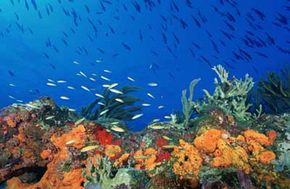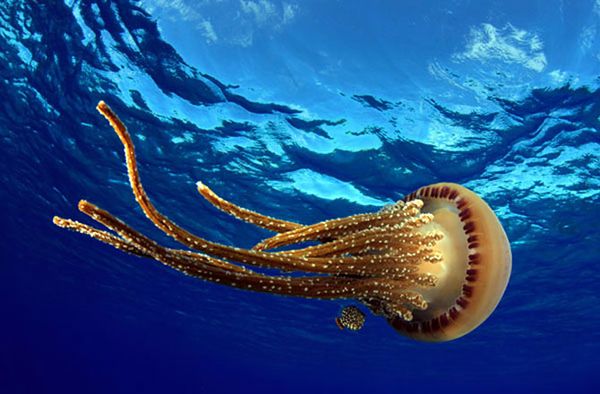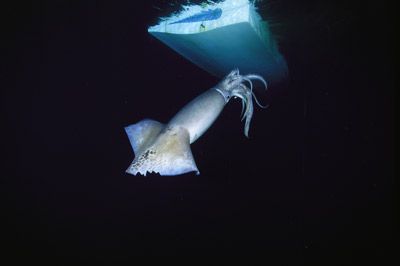As you duck beneath the water's surface, your senses click into overdrive. To your right, a bright orange clown fish ducks behind a sea anemone while a moray eel retreats into its coral cave. As you float in the other direction, you spot giant sea fans dotting the underwater landscape and branching corals beckoning towards you, as though inviting you to join them.
You are scuba diving along one of the many coral reefs scattered throughout the equatorial seas, glimpsing the multitude of life that this largest of living structures supports. Your underwater view, however, may be limited. Seventy percent of coral reefs may be gone in less than 40 years if the present rate of destruction continues [source: Nature Conservancy].
Advertisement
Coral reefs are made predominantly of stony corals and supported by the limestone skeleton they excrete. These rainforests of the sea are home to a quarter of all marine fish species [source: Nature Conservancy]. In addition to the variety of marine life they support, coral reefs are also immensely beneficial to humans, buffeting coastal regions from strong waves and storms, providing millions of people with food and jobs and prompting advances in modern medicine.
How are these incredible structures created? How can a single coral that is only 3 millimeters long (about the size of the word "is" on this page) become a reef that may stretch for miles and weigh hundreds of tons? In this article, you'll learn how coral reefs form, what kind of life they harbor and why scientists say they may largely disappear in the coming century.
On the next page, you'll learn more about the little guys responsible for starting those great chains of coral.


